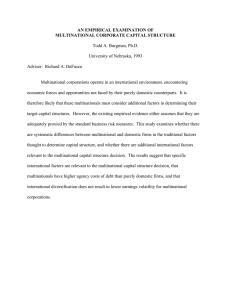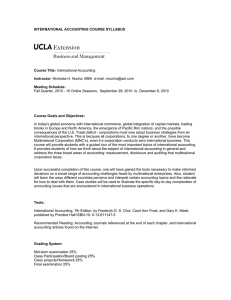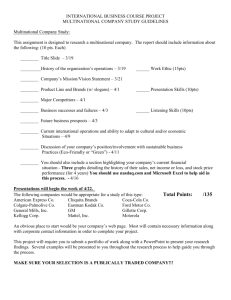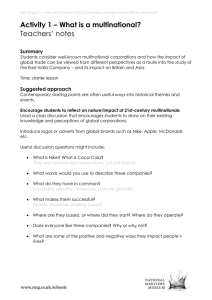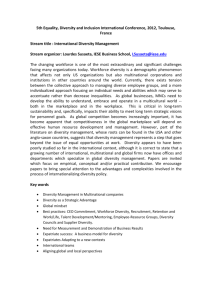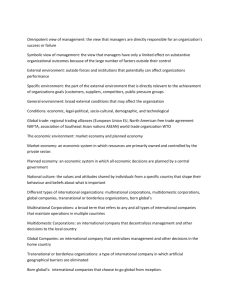A.A. 2014/2015
advertisement
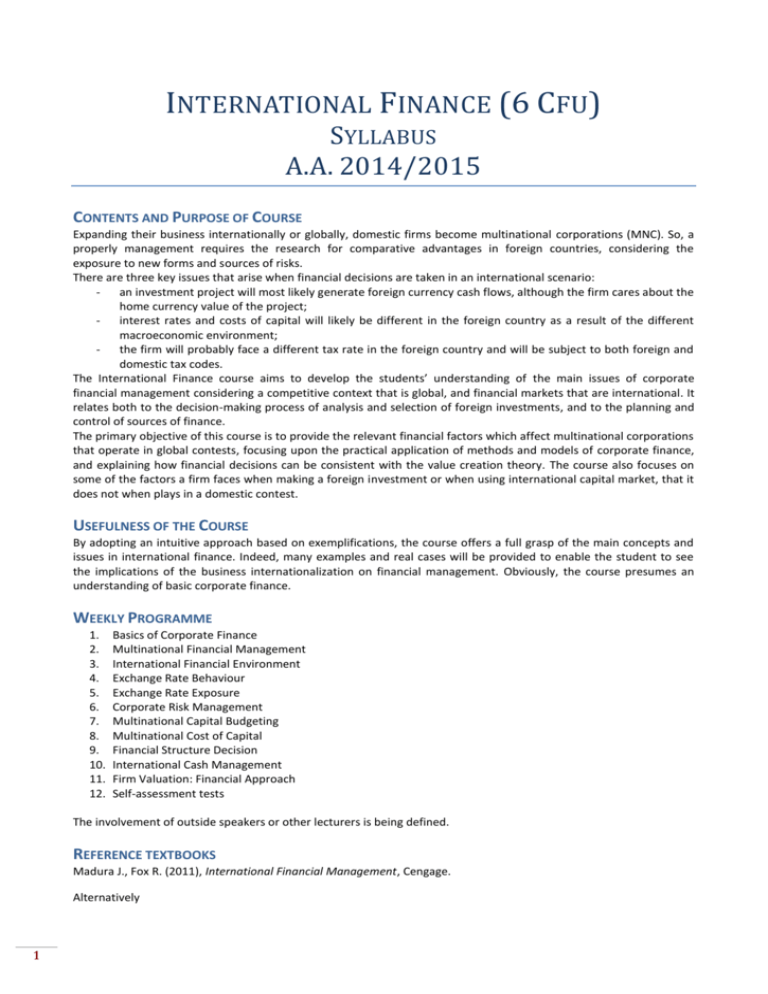
INTERNATIONAL FINANCE (6 CFU) SYLLABUS A.A. 2014/2015 CONTENTS AND PURPOSE OF COURSE Expanding their business internationally or globally, domestic firms become multinational corporations (MNC). So, a properly management requires the research for comparative advantages in foreign countries, considering the exposure to new forms and sources of risks. There are three key issues that arise when financial decisions are taken in an international scenario: an investment project will most likely generate foreign currency cash flows, although the firm cares about the home currency value of the project; interest rates and costs of capital will likely be different in the foreign country as a result of the different macroeconomic environment; the firm will probably face a different tax rate in the foreign country and will be subject to both foreign and domestic tax codes. The International Finance course aims to develop the students’ understanding of the main issues of corporate financial management considering a competitive context that is global, and financial markets that are international. It relates both to the decision-making process of analysis and selection of foreign investments, and to the planning and control of sources of finance. The primary objective of this course is to provide the relevant financial factors which affect multinational corporations that operate in global contests, focusing upon the practical application of methods and models of corporate finance, and explaining how financial decisions can be consistent with the value creation theory. The course also focuses on some of the factors a firm faces when making a foreign investment or when using international capital market, that it does not when plays in a domestic contest. USEFULNESS OF THE COURSE By adopting an intuitive approach based on exemplifications, the course offers a full grasp of the main concepts and issues in international finance. Indeed, many examples and real cases will be provided to enable the student to see the implications of the business internationalization on financial management. Obviously, the course presumes an understanding of basic corporate finance. WEEKLY PROGRAMME 1. 2. 3. 4. 5. 6. 7. 8. 9. 10. 11. 12. Basics of Corporate Finance Multinational Financial Management International Financial Environment Exchange Rate Behaviour Exchange Rate Exposure Corporate Risk Management Multinational Capital Budgeting Multinational Cost of Capital Financial Structure Decision International Cash Management Firm Valuation: Financial Approach Self-assessment tests The involvement of outside speakers or other lecturers is being defined. REFERENCE TEXTBOOKS Madura J., Fox R. (2011), International Financial Management, Cengage. Alternatively 1 Bekaert G., Hodrick R. (2014), International Financial Management, Pearson (a less expensive on-line version is available). Laurent J.L. (2014), International Corporate Finance, Wiley. OFFICE HOURS Students will be received every Friday after class. COURSE WEBSITE Class announcements, office hours, case materials, problems and solutions, additional readings, will be posted here: https://web.uniroma1.it/dip_management/. COURSE REQUIREMENT AND GRADING Course requirements include regular attendance and participation in class, three self-assessment sessions during the course, and one final exam. Passing the final exam involves passing a written test and an oral test. 2

